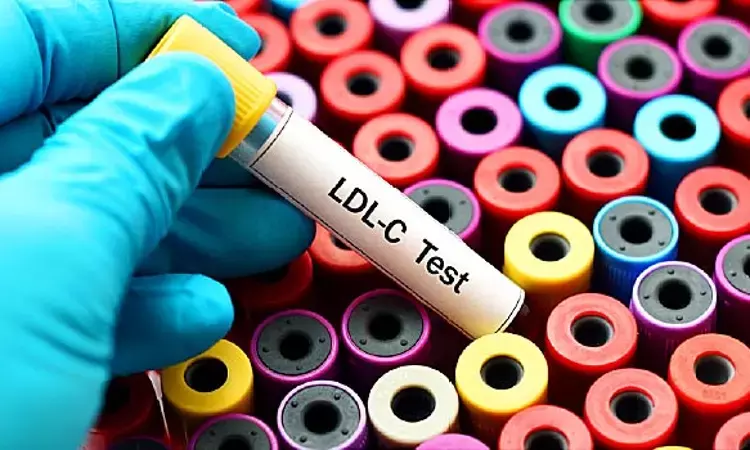- Home
- Medical news & Guidelines
- Anesthesiology
- Cardiology and CTVS
- Critical Care
- Dentistry
- Dermatology
- Diabetes and Endocrinology
- ENT
- Gastroenterology
- Medicine
- Nephrology
- Neurology
- Obstretics-Gynaecology
- Oncology
- Ophthalmology
- Orthopaedics
- Pediatrics-Neonatology
- Psychiatry
- Pulmonology
- Radiology
- Surgery
- Urology
- Laboratory Medicine
- Diet
- Nursing
- Paramedical
- Physiotherapy
- Health news
- Fact Check
- Bone Health Fact Check
- Brain Health Fact Check
- Cancer Related Fact Check
- Child Care Fact Check
- Dental and oral health fact check
- Diabetes and metabolic health fact check
- Diet and Nutrition Fact Check
- Eye and ENT Care Fact Check
- Fitness fact check
- Gut health fact check
- Heart health fact check
- Kidney health fact check
- Medical education fact check
- Men's health fact check
- Respiratory fact check
- Skin and hair care fact check
- Vaccine and Immunization fact check
- Women's health fact check
- AYUSH
- State News
- Andaman and Nicobar Islands
- Andhra Pradesh
- Arunachal Pradesh
- Assam
- Bihar
- Chandigarh
- Chattisgarh
- Dadra and Nagar Haveli
- Daman and Diu
- Delhi
- Goa
- Gujarat
- Haryana
- Himachal Pradesh
- Jammu & Kashmir
- Jharkhand
- Karnataka
- Kerala
- Ladakh
- Lakshadweep
- Madhya Pradesh
- Maharashtra
- Manipur
- Meghalaya
- Mizoram
- Nagaland
- Odisha
- Puducherry
- Punjab
- Rajasthan
- Sikkim
- Tamil Nadu
- Telangana
- Tripura
- Uttar Pradesh
- Uttrakhand
- West Bengal
- Medical Education
- Industry
CAC score may predict risk of cardiac events in patients with High LDL-C: JAMA

The US and European guidelines for the management of dyslipidemias in the prevention of atherosclerotic cardiovascular disease (ASCVD) provide strong recommendations for treating all patients with severe hypercholesterolemia (low-density lipoprotein cholesterol [LDL-C] levels ≥190 mg/dL)) with statins. However, a recent study suggests that the absence of calcified and noncalcified plaque on coronary computed tomographic angiography was associated with low risk for ASCVD events.Patients with elevated LDL-C levels but with low coronary artery calcium scores (CAC) on CT angiography may have lower risk of cardiovascular disease than is generally assumed.
The study findings were published in the JAMA Network of Open on February 11, 2022.
Atherosclerosis burden and coronary artery calcium (CAC) are associated with the risk for ASCVD events, with the absence of plaque and CAC indicating a low risk. Whether this is true in patients with elevated levels of LDL-C is not known. Specifically, a high prevalence of noncalcified plaque might signal high risk. Therefore, Dr Martin Bødtker Mortensen and his team conducted a study to determine the prevalence of noncalcified and calcified plaque in symptomatic adults and assess its association with cardiovascular events across the LDL-C spectrum.
In a cohort study, the researchers included 23 143 symptomatic patients undergoing coronary computed tomographic angiography and categorized them into the following 5 LDL-C groups:
♦ 77
♦ 77 to 112
♦ 113 to 154
♦ 155 to 189
♦ ≥190 mg/dL
The severity of coronary artery disease was categorized using CAC scores of 0, 1 to 99, and ≥100, where higher numbers indicate greater CAC burden. The major outcome assessed was atherosclerotic cardiovascular disease events (myocardial infarction and stroke) and death.
Key findings of the study:
- During a median follow-up of 4.2 years, the researchers observed 1029 ASCVD and death events.
- Across LDL-C strata, they found that the absence of CAC was prevalent, ranging from 438 of 948 (46.2%) in patients with LDL-C levels of ≥190 mg/dL to 4370 of 7964 (54.9%) in patients with LDL-C levels of 77 - 112 mg/dL.
- They noted that it was associated with no detectable plaque in most patients, with a range from 77.2% in patients with LDL-C levels of ≥190 mg/dL to 88.6% in those with LDL-C levels of ≥77 mg/dL.
- In all LDL-C groups, they found that the absence of CAC was associated with low rates of ASCVD and death (6.3 per 1000 person-years), with increasing rates in patients with CAC scores of 1 to 99 (11.1 per 1000 person-years) and CAC scores of at least 100 (21.9 per 1000 person-years).
- Among those with CAC scores of 0, they noted that the event rate per 1000 person-years was 6.3 in the overall population compared with 6.9 in those with LDL-C levels of at least 190 mg/dL.
- Across all LDL-C strata, they found that the rates were similar and low in those with CAC scores of 0, regardless of whether they had no plaque or purely noncalcified plaque.
The authors concluded, "The findings of this cohort study suggest that in symptomatic patients with severely elevated LDL-C levels of at least 190 mg/dL who are universally considered to be at high risk by guidelines, absence of calcified and noncalcified plaque on coronary computed tomographic angiography was associated with low risk for ASCVD events. These results further suggest that atherosclerosis burden, including CAC, can be used to individualize treatment intensity in patients with severely elevated LDL-C levels."
For further information:
DOI:10.1001/jamanetworkopen.2021.48139
Medical Dialogues Bureau consists of a team of passionate medical/scientific writers, led by doctors and healthcare researchers. Our team efforts to bring you updated and timely news about the important happenings of the medical and healthcare sector. Our editorial team can be reached at editorial@medicaldialogues.in.
Dr Kamal Kant Kohli-MBBS, DTCD- a chest specialist with more than 30 years of practice and a flair for writing clinical articles, Dr Kamal Kant Kohli joined Medical Dialogues as a Chief Editor of Medical News. Besides writing articles, as an editor, he proofreads and verifies all the medical content published on Medical Dialogues including those coming from journals, studies,medical conferences,guidelines etc. Email: drkohli@medicaldialogues.in. Contact no. 011-43720751


